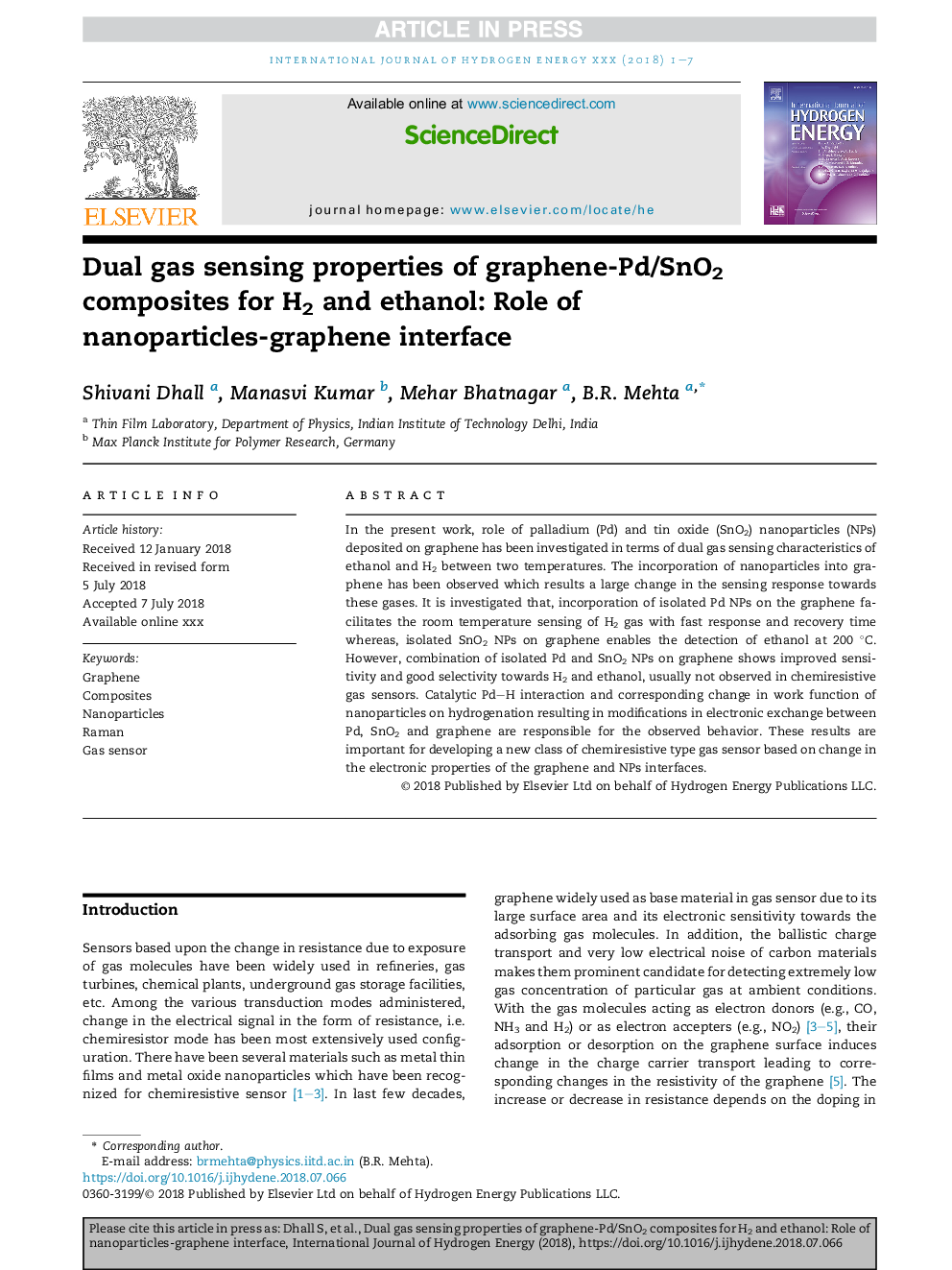| Article ID | Journal | Published Year | Pages | File Type |
|---|---|---|---|---|
| 8954959 | International Journal of Hydrogen Energy | 2018 | 7 Pages |
Abstract
In the present work, role of palladium (Pd) and tin oxide (SnO2) nanoparticles (NPs) deposited on graphene has been investigated in terms of dual gas sensing characteristics of ethanol and H2 between two temperatures. The incorporation of nanoparticles into graphene has been observed which results a large change in the sensing response towards these gases. It is investigated that, incorporation of isolated Pd NPs on the graphene facilitates the room temperature sensing of H2 gas with fast response and recovery time whereas, isolated SnO2 NPs on graphene enables the detection of ethanol at 200 °C. However, combination of isolated Pd and SnO2 NPs on graphene shows improved sensitivity and good selectivity towards H2 and ethanol, usually not observed in chemiresistive gas sensors. Catalytic PdH interaction and corresponding change in work function of nanoparticles on hydrogenation resulting in modifications in electronic exchange between Pd, SnO2 and graphene are responsible for the observed behavior. These results are important for developing a new class of chemiresistive type gas sensor based on change in the electronic properties of the graphene and NPs interfaces.
Related Topics
Physical Sciences and Engineering
Chemistry
Electrochemistry
Authors
Shivani Dhall, Manasvi Kumar, Mehar Bhatnagar, B.R. Mehta,
